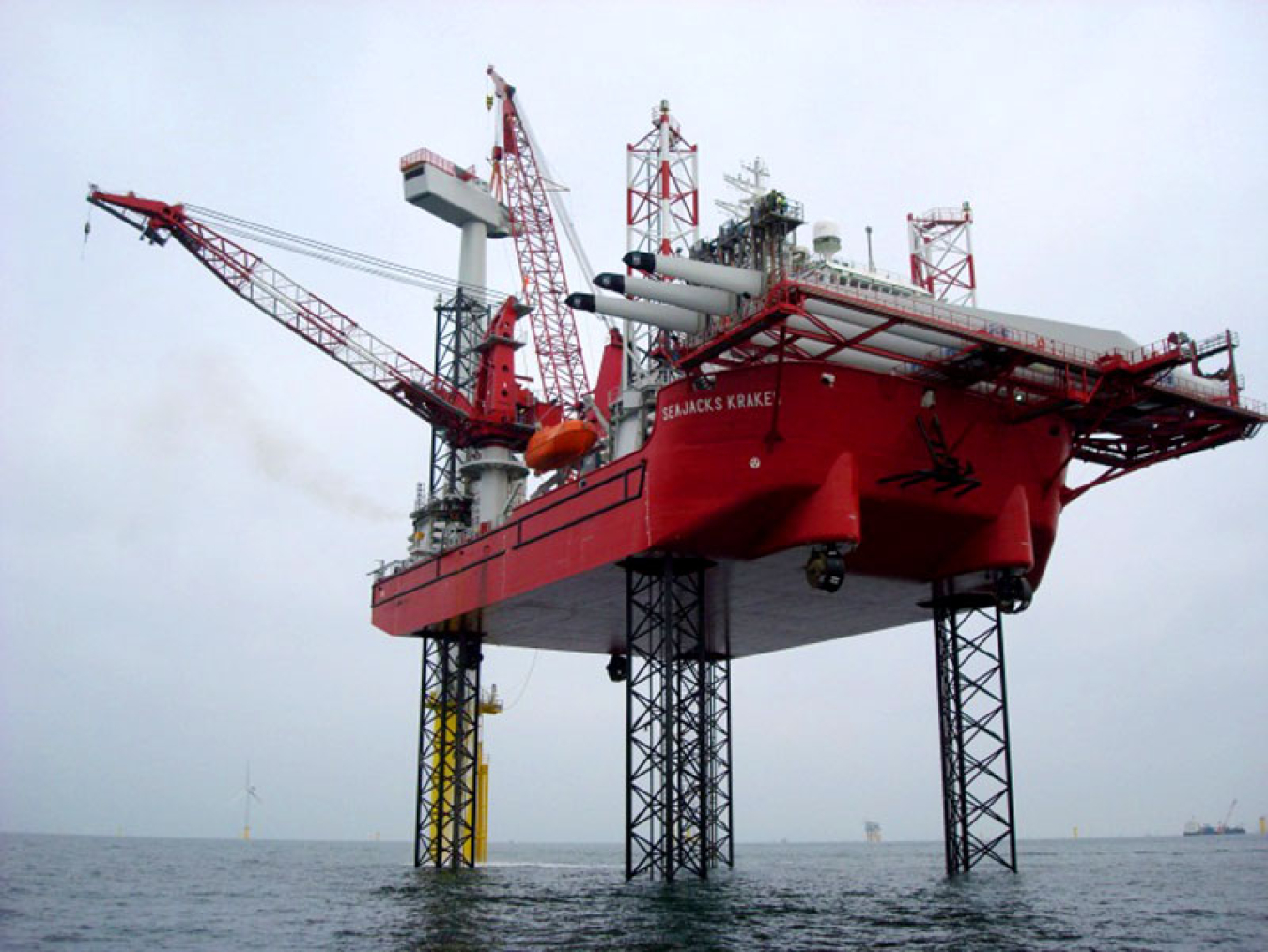
Seajacks Kraken installing Siemens 3.6-MW turbine.
Photo courtesy of GL Garrad Hassan
This is an excerpt from the Third Quarter 2013 edition of the Wind Program R&D Newsletter.
For the United States to ensure that the substantial rollout of offshore wind energy projects envisioned by the U.S. Department of Energy (DOE) is carried out in an efficient and cost-effective manner, it is important to analyze the current and emerging practices in the international offshore wind energy industry. In this manner, the United States can draw from the experience already gained around the world, combined with experience from the sizeable U.S. land-based wind industry, to develop a strong offshore wind sector. DOE commissioned a report by the independent consultancy GL Garrad Hassan (GL GH), which has a strong presence in the United States, broad experience in the international land-based and offshore wind industries, and significant first-hand knowledge of offshore installation, operation and maintenance (IO&M) activities.
The aim of the GL GH study was to enable project designers and planners to consider alternative, new, and emerging approaches to IO&M, whether brought about through innovative component design (such as a new type of foundation), or through an alternative methodology, vessel, or supporting equipment. Examples of the types of alternatives that can be evaluated in trade-off studies include installation of blades on the turbine nacelle (tower top) in port rather than at sea; procurement of highly specialized but expensive installation vessels rather than the use of more common, but less efficient, jack-up barges; and the long-term cost effectiveness of innovative crew access systems, which allow service personnel to transfer to turbine foundations from service boats in waves above 1.5 meters, significantly increasing the number of days per year that service work could be carried out. The computer-based modeling carried out under the study assessed the ability of these emerging approaches to positively impact the economics of an offshore project and lower its levelized cost of energy (LCOE).
The GL GH study will be useful to all offshore wind stakeholders with an interest in addressing the technical and cost factors of IO&M activities in the United States, including manufacturers in the supply chain, project developers, offshore contractors, and project financiers. This study also provides information that can be applied to site identification, and feasibility studies that are relevant to all stages of project implementation including development, procurement, construction, and operation.
GL GH reviewed current state-of-the-art and likely future practices for offshore wind farm IO&M within the offshore industry. When combined with data on meteorological and metocean conditions of U.S. coasts and the Great Lakes, this review informed an intensive modeling exercise to characterize costs for IO&M aspects of offshore wind projects. The study considered 24 separate wind and wave climates along with a very wide array of other project and logistical variables to analyze and optimize IO&M strategies in a range of coastal regions as the offshore wind industry develops in the United States between 2014 and 2030.
High level findings demonstrate the substantial impact of meteorological and oceanographic (metocean) conditions on project timelines, costs, and revenue, and identify means by which these impacts may be reduced. IO&M costs appear to favor fewer, larger turbines due to the associated requirement for fewer weather windows and faster installation times per megawatt of capacity. The report also discusses the cost implications for the onerous wave climate in the Pacific Ocean, the impact of sea ice on projects in the Great Lakes, and the limitations for getting installation vessels through the St. Lawrence Seaway to the Great Lakes.
In addition to the report, GL GH developed a publicly available Excel-based IO&M LCOE Analysis Tool that allows the industry user to investigate the impact of specific installation capital costs and ongoing operation and maintenance costs on the overall LCOE of a given project. GL GH's report provides insight into the many factors that affect—and are affected by—IO&M activities at offshore wind farms. The companion analysis tool empowers stakeholders to evaluate project- or product-specific IO&M innovations and strategies in great detail as a key step in keeping the lifetime costs of generating electricity as low as possible.
